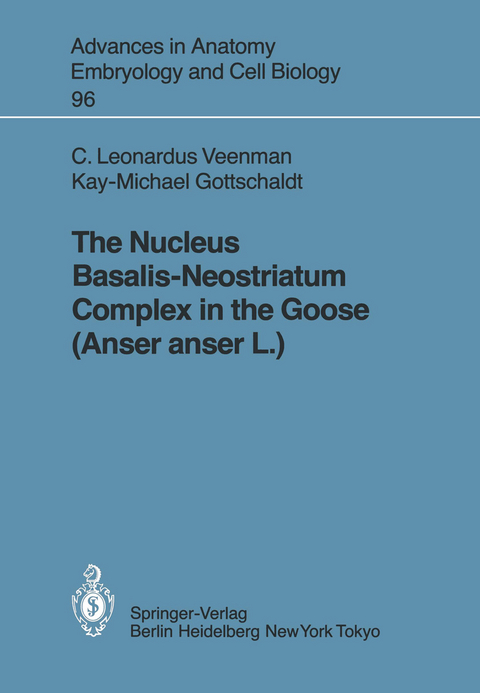
The Nucleus Basalis-Neostriatum Complex in the Goose (Anser anser L.)
Springer Berlin (Verlag)
978-3-540-15338-2 (ISBN)
1 Introduction.- 2 Material and Methods.- 2.1 Procedures for HRP Material.- 2.2 Procedures for Golgi Material.- 2.3 Additional Histological Material.- 3 Results.- 3.1 General Remarks on HRP Experiments.- 3.2 Vertical Connections of the Neostriatum Frontale.- 3.3 Long Efferents from the Neostriatum Frontale.- 3.4 Long Afferents to the Neostriatum Frontale.- 3.5 Morphology and Arrangement of Neuronal Elements in the Nucleus Basalis.- 3.6 Horizontal Connections of the Nucleus Basalis, Neostriatum Frontale, and Hyperstriatum Ventrale.- 4 Discussion.- 4.1 Vertical Connections and Long Efferents of the Neostriatum Frontale.- 4.2 Long Afferents to the Neostriatum Frontale.- 4.3 Morphology and Arrangement of the Neuronal Elements in the Nucleus Basalis.- 4.4 Horizontal Connections of the Nucleus Basalis, Neostriatum Frontale, and Hyperstriatum Ventrale.- 4.5 Concluding Remarks.- 5 Summary.- Acknowledgements.- References.
| Erscheint lt. Verlag | 1.11.1985 |
|---|---|
| Reihe/Serie | Advances in Anatomy, Embryology and Cell Biology |
| Zusatzinfo | VIII, 86 p. 20 illus. |
| Verlagsort | Berlin |
| Sprache | englisch |
| Maße | 170 x 244 mm |
| Gewicht | 200 g |
| Themenwelt | Studium ► 1. Studienabschnitt (Vorklinik) ► Anatomie / Neuroanatomie |
| ISBN-10 | 3-540-15338-1 / 3540153381 |
| ISBN-13 | 978-3-540-15338-2 / 9783540153382 |
| Zustand | Neuware |
| Haben Sie eine Frage zum Produkt? |
aus dem Bereich


